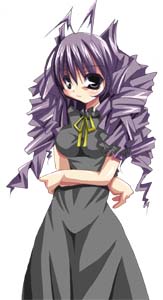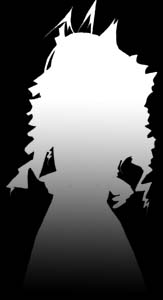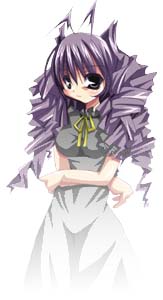Shell
Translated Document
This document has been translated from the original Japanese by members of the Ukagaka Dream Team community.
To see the original document, click here.
To submit corrections/updates, see our repository to open an issue or find where to contact us.
The files in the shell folder are as follows.
+-(myghost) +-shell +-master +-descript.txt +-readme.txt +-surface*.png +-surface*.pna +-(element).png +-(element).pna +-surfaces.txt +-surfaces**.txt (SSP only) +-alias.txt (Old specification) +-thumbnail.png +-makoto.dll +-surfacetable.txt (SSP only) +-menu_background.png +-menu_foreground.png +-menu_sidebar.png
※For menu_background.png, menu_foreground.png, and menu_sidebar.png, see the "Owner Draw Menu" page.
- descript.txt
-
A file to identify the shell and perform basic configuration.
See link for descriptions of items in the text.
- readme.txt
-
For shell authors to indicate the source of distribution, etc.
Can be omitted, but if provided, it can be referenced during installation or from the baseware menu, etc.
It is desirable to provide as much as possible, especially when the ghost author and shell author are different.
- surface*.png
-
Surface file.
A picture that appears on the desktop.
There are no restrictions on image size or number of colors.
The file format is PNG※.
The pixel in the top left corner of the image (coordinates 0,0) is considered to be the transparency color (invisible color), and is transparent on the display.
For surface numbers, although there is a standard assignment, they can be assigned freely.
However, surface0 and surface10 are considered mandatory (recommended but not required for SSP).
Therefore, even if it is a ghost of a single character, it is necessary to prepare an image for surface10. For example, an image filled with a single color.
Surface numbers range from 0 to 8192 if the baseware is MATERIA (embryo, original Ukagaka).
Other baseware have no restrictions.
- surface*.pna
-
Alpha channel definition file for a surface.
A grayscale png image (black = transparent ←→ opaque = white) renamed to the extension pna.
Surfaces can be made semi-transparent by creating a pna file with the same number as the surface number.

→ 
→ 
surface0.png surface0.pna Desktop display Areas that are not completely transparent can be detected as collisions.
Also, pna is ignored in unsupported environments such as Windows 9x and very old graphics boards.
In SSP, it is also possible to use the alpha channel (transparency information) of the png itself, via settings.
- (element).png
-
According to the element specification, PNG images※ with arbitrary names can be combined as parts and handled as a single surface. This is the image for the parts.
※You can replace (element) with any name you like. You may use any number of pieces, but they are of course not required.
See also "surfaces.txt" below for details.
- (element).pna
-
pna for each element (composite parts) image.
- surfaces.txt
-
A file that defines surface ID assignment, layer composition, animations, hitboxes, etc.
See surfaces.txt for definitions.
For animations and dressup, see animation.
- surfaces**.txt
-
For SSP only.
** can be any string.
The name surfaces2.txt has been supported since the 2.01 series, and any string can be used since 2.2.57.
The function is the same as surfaces.txt.
This is for using SSP-specific functions while maintaining compatibility.
This file can be omitted. It is also acceptable to add only the necessary parts.
- alias.txt
-
Old specification. File for writing sakura(kero).alias braces.
The functionality is now integrated into surfaces.txt.
- thumbnail.png
-
Thumbnail displayed when a shell is selected in the menu tree.
Acceptable image formats are png or jpg.
A png renamed to pnr treats the color in the upper left corner of the image (coordinates 0,0) as transparency.
This file can be omitted.
- makoto.dll
-
For using the translate function.
Same as what can be provided on the ghost side. See link for details.
This file is optional.
- surfacetable.txt
-
SSP only.
Suface content definition files for use with the "surface test" function of the SSP development palette and other shell creation support utilities.
See the link for more information.
This file is optional.